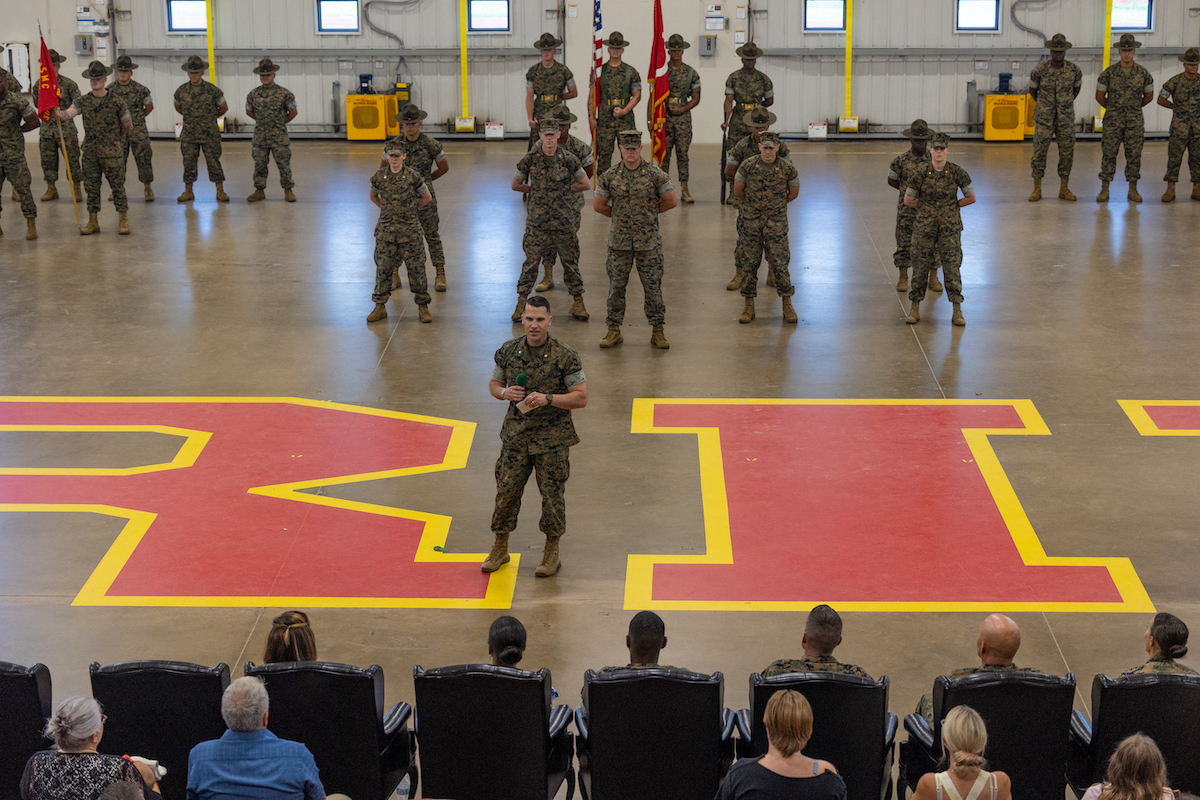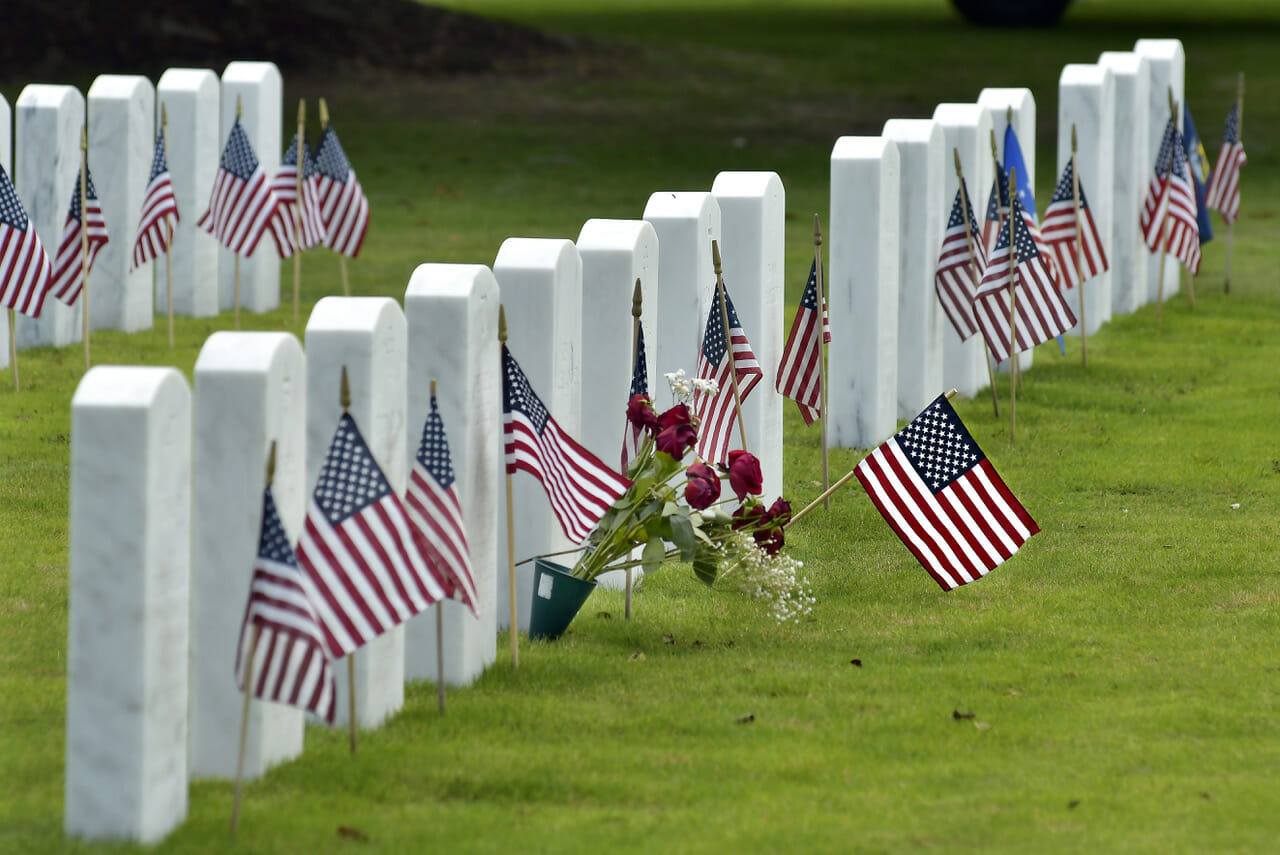By LARRY DANDRIDGE
 Every wound, injury, illness, and Hazardous Material (HAZMAT) contamination that a US military man or women has may very well cause some kind of serious service-connected disability. As time goes by these injuries, illnesses and HAZMAT encounters may prevent the veteran and his or her family from working and enjoying life. These harmful events may also cause employment problems, disease, and deformity in offspring, domestic problems, and divorces.
Every wound, injury, illness, and Hazardous Material (HAZMAT) contamination that a US military man or women has may very well cause some kind of serious service-connected disability. As time goes by these injuries, illnesses and HAZMAT encounters may prevent the veteran and his or her family from working and enjoying life. These harmful events may also cause employment problems, disease, and deformity in offspring, domestic problems, and divorces.
If a veteran or active duty member cannot show the military service or the VA strong proof that these injuries, illnesses, and HAZMAT encounters happened while on active duty and cannot show that their disabilities are military service-connected, the military medical and the VA compensation and pension folks will likely not award service-connected disability compensation and other benefits. To ensure a veteran and his or her family receives the benefits they earned, every active duty Marine, Sailor, Soldier, Airman, and Coast Guardsman needs to:
1. Make certain he or she prepares for and takes maximum advantage of the Separation Health Assessment, which is a single exam that supports the VA disability compensation program and Department of Defense (DoD) mandatory separation, history, and physical exam. The VA conducts the exam when the service member is applying for disability compensation and has at least 90 days remaining on active duty. DoD conducts the exam for service members who aren’t filing a disability compensation claim or have less than 90 days remaining on active duty. The assessment provides a complete medical evaluation at separation, which documents any medical concerns identified during the service member’s military career For more information see the following web site file:///C:/Users/Owner/Documents/Free%20Lance%20Writing/SeparationHealthAssessment%20(1).pdf
2. Report in detail all injuries (including hearing damage, significant emotional events, and mental trauma), illnesses, wounds, and HAZMAT contamination to his or her chain of command and to their medical team.
3. Make sure these injuries (including sprains, cuts, blunt trauma, etc.), wounds, illnesses, and HAZMAT contaminations are documented in as much detail as possible in the service member’s medical and personnel records. HAZMAT includes such things as Agent Orange and other rainbow chemicals, radiation, asbestos, lead and smoke; chemicals like solvents, asbestos, fuel, lubricants, and cleaning materials; contact with pathogens (like exposure to body fluids from needle pricks, administering first aid and CPR, etc.), and many others. If proper protective equipment (PPE) is used, the Material Safety Data Sheet (MSDS) is followed, and no contamination takes place then the service member need not document.
4. Obtain copies of all medical records, personnel records, and line-of-duty reports, accident reports, operational hazard reports (OHRs), serious incident reports, OSHA Injury & Illness Incident Reports, efficiency reports (performance evaluations), news articles, unit history reports, and other reports for any service-connected injury.
5. Take pictures of any injuries and exposures that are service connected and record all witness names, addresses, and phone numbers and the dates, times, places, and circumstances of the event. It is also wise to get a copy of the HAZMAT label, tag, markings, and Material Safety Data Sheet (MSDS) if HAZMAT is involved.
6. As soon as possible after any wounds, injuries, illnesses, or HAZMAT contamination, obtain detailed lay witness (eye witness) signed and dated statements from witnesses to the event, injuries, illness, and contamination. The service member should then keep these pictures and lay witness statements in a safe place for the rest of his or her life. The service member should also ensure his or her spouse knows where the lay witness statements and other evidence are stored.
7. Obtain a paper or digitized copy of his or her Department of Defense (DD) Form 214 Certificate of Release or Discharge from Active Duty, military personnel records, military medical records, and other military records when he or she is separated or retired from the military. Veterans can request a copy of their DD214, personnel records, and medical records by online, by fax, by phone, or letter by following the instructions at the National Archives web site at https://www.archives.gov/veterans.
Military men and women have historically not done a good job of keeping proof of their injuries, wounds, illnesses, exposure to loud noise, and HAZMAT contaminations. They frequently live to regret this terribly as they get older. These injuries and exposures frequently cause worsening health related conditions. They also cause secondary health problems, may cause health problems in their children, and result in many premature deaths. Without firm evidence of injuries and contaminations, the application of VA and State Veterans benefits could be delayed and have a much higher probability of being denied.
Military men and women have historically also not done a good job of taking advantage of his or her Separation Health Assessment and, especially filing for VA health benefits and disability. Adding to the problem of missed benefits, the joint VA and DOD Separation Health Assessment was not available until half way through the war in Iraq. Some military members are so anxious to get out of the military, as fast as they can, they forgo applying for VA benefits and the VA Separation Health Assessment —– and applying for VA Disability benefits is not mandatory.
Don’t miss out on your hard-earned Veterans state and federal benefits and military benefits, like Service-Related Special Compensation (CRSC) because you do not have PROOF of in-service wounds, injuries, illnesses, and contaminations. The Army, Navy and Marine Corps, and Air Force have separate addresses to submit CRSC claims to. The Navy and US Marine Corps CRSC web site is at https://www.secnav.navy.mil/mra/CORB/Pages/CRSCB/default.aspx.
Read all about applying for CRSC at the Defense Finance and Accounting Service (DFAS) website https://www.dfas.mil/retiredmilitary/disability/applyforcrsc/. The Army, Navy and Marine Corps, and Air Force have separate addresses to submit CRSC claims to. The Navy and US Marine Corps web site is at https://www.secnav.navy.mil/mra/CORB/Pages/CRSCB/default.aspx..
Don’t miss out on the best and free medical care in the world, the best family assistance available, employment assistance and advantages, and dozens of other VA benefits. Do not miss out on potentially tens of thousands of dollars of VA service-connected disability pay (100% disabled veterans are eligible for over $36,000.00 per year in disability compensation and free medical care), because you cannot prove you were injured, ill, wounded, or contaminated with HAZMAT and disabled while serving your country.
The old saying of “If it is not written down officially somewhere, it did not happen!” is especially true with filing a successful claim for service-connected disability and other related benefits with the VA and with filing a successful claim for Combat Related Special Compensation (CRSC).
Larry Dandridge is a Vietnam era wounded warrior, a combat 100% disabled veteran, an ex-Enlisted Infantryman, an Ex-Warrant Officer Attack Helicopter Pilot and Test-pilot, and a retired Lt. Colonel. He is a Veterans Service Officer, volunteer Patient Adviser and CEO Advisory Council Member at the RHJ VA Medical Center; the Fisher House Charleston volunteer Good Will Ambassador; the VP for Veteran and Retiree Affairs for the Coastal Carolina Army Association Chapter; the Author of the award winning BLADES OF THUNDER (Book One), and contributing writer with the Island News. You can email him at: LDandridge@earthlink.net
EDITOR’S NOTE: This is the first article of a series of 12 helpful articles on State of SC and Federal Veterans Benefits to be published in the Island News over the next three months.








